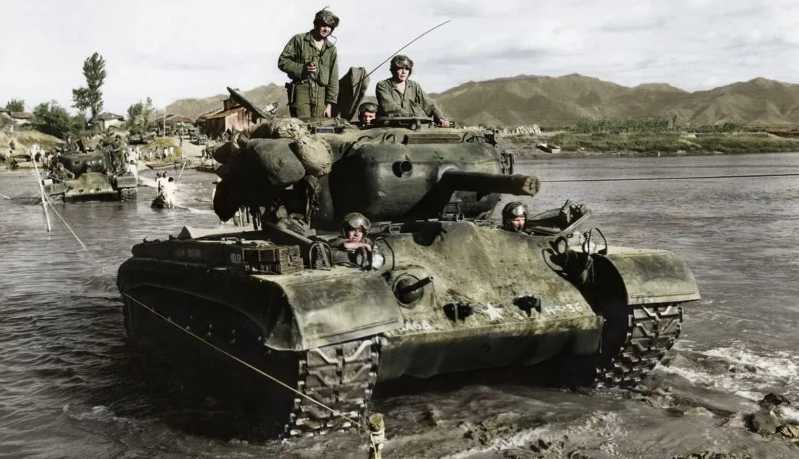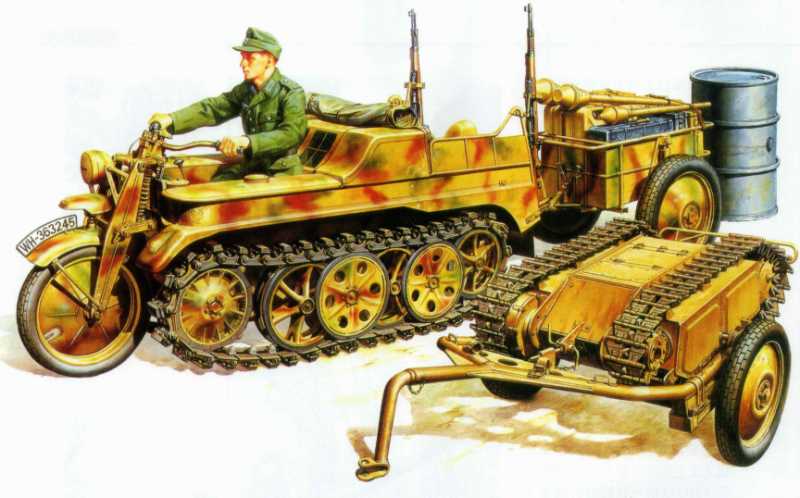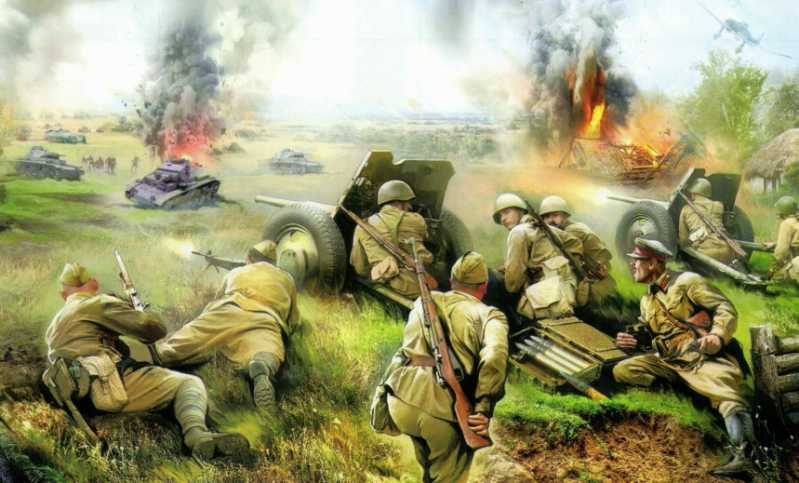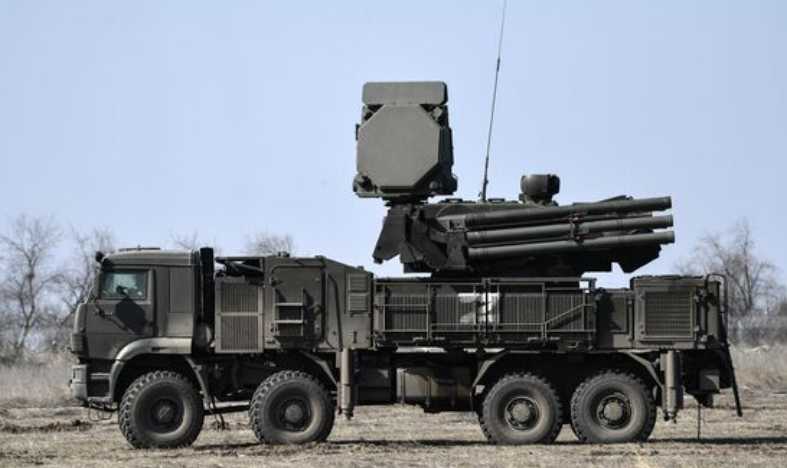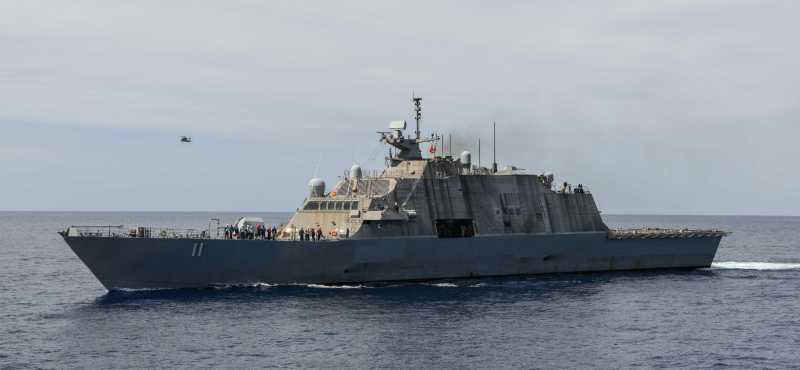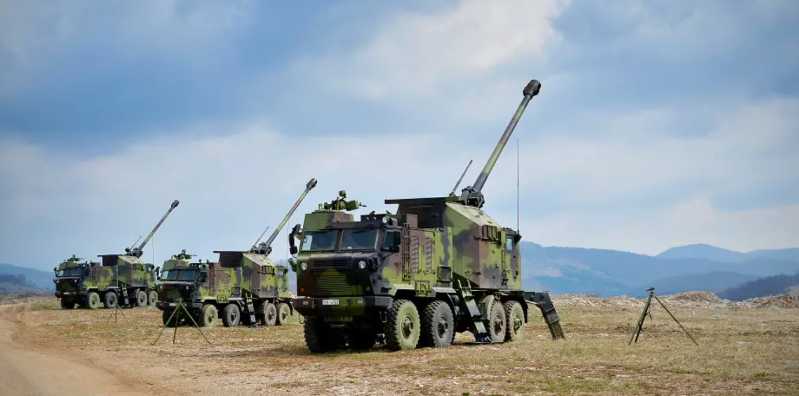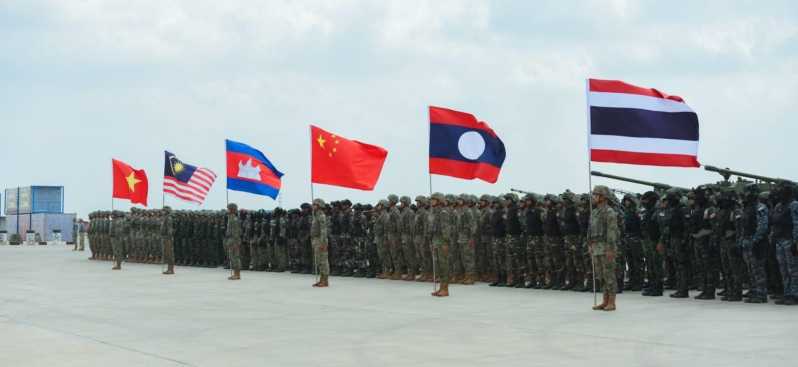On August 1, 1927, the Nanchang Uprising gave birth to the People’s Army. Over the past 90 years, this People’s Army has experienced the test of war in the rain of bullets, and has gone through a magnificent and glorious journey. From small to large, from weak to strong, it has become the mainstay of defending China’s socialist modernization and national security, and an important force in maintaining world peace. In the long-term practice of revolutionary wars, the People’s Army has gained experience in building a new type of revolutionary armed force, and gradually created new technical arms of the People’s Army that adapt to the new situation and tasks, and has written a brilliant chapter for the growth and development of the People’s Army.
The first artillery regiment
One day in late September 1937, in a cave in Zaoyuan, Yan’an, Mao Zedong saw such a battle report: The 343rd Brigade Mortar Company of the 115th Division of the Eighth Route Army played an important role in the Pingxingguan battle. Looking at it, he stood up from the chair he was sitting on, waved the battle report and said excitedly that the mortar company should be given special praise. Then he sighed: "There is really no victory without artillery!" A few days later, the Central Military Commission issued an order to form the Eighth Route Army Headquarters Artillery Regiment.
On January 28, 1938, the Eighth Route Army Headquarters Artillery Regiment was established in Wogou Village, Linfen, Shanxi. At the beginning of its establishment, the artillery regiment faced many difficulties. The first was the shortage of weapons and equipment. Through various efforts, the artillery regiment collected more than 10 mountain cannons and 4 mortars as well as some necessary equipment and equipment, and basically had the ability to perform combat tasks.
In August 1938, the first company of the artillery regiment was ordered to take the lead in going to the anti-Japanese front in Shanxi, cooperating with the 115th Division of the Eighth Route Army to ambush the Japanese army near the Fen (Yang) Li (Shi) Highway, and supporting the infantry with accurate and fierce firepower to annihilate more than 400 Japanese troops, destroy 2 vehicles, and kill and seize more than 320 Japanese war horses. The first battle in which the artillery regiment participated was a victory, which greatly boosted the morale of the officers and soldiers.
On January 28, 1939, the artillery regiment celebrated its first anniversary. Mao Zedong has always been concerned about the construction and development of the artillery regiment. On this day, he happily wrote an inscription for the artillery regiment, encouraging them: "To form a powerful corps in the War of Resistance Against Japan, to achieve the goal of being invincible, to win glory for the nation, and to be a model for the Eighth Route Army!
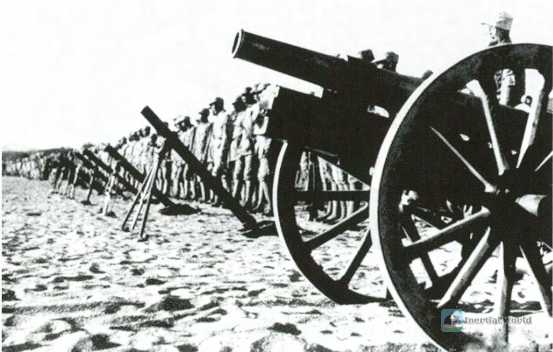
On August 10, 1940, the artillery regiment participated in the famous Hundred Regiments Campaign. In a battle, our army surrounded the Okazaki Battalion of the Japanese Army. At that time, the enemy occupied a hilltop, commanding the enemy, and used more than a dozen machine guns to form a dense firepower network for stubborn resistance. After several attacks failed, the commander of the ninth company of the artillery regiment and the god gunner Zhao Zhangcheng decided to overwhelm the enemy with fierce artillery fire. He personally brought a mortar and a dozen people and quietly came to a broken Hiding under the cliff. At that time, the enemy was above and our army was below, and the distance between the two sides was only thirty or forty meters. After measuring the distance, Zhao Zhangcheng used an extremely large shooting angle of 88.5 degrees for super-speed shooting.
During the shooting process, 8 soldiers opened the shell boxes to prepare shells, and 4 soldiers kept installing fuses, but they could not keep up with Zhao Zhangcheng’s shooting speed. In just 6 minutes, he fired 240 shells in succession, an average of one shell per second and a half, and the shells almost went straight up and down into the enemy’s position. Later, according to the prisoners’ reflection: I saw shells flying all over the sky, and I haven’t figured out where these shells came from and how many guns were firing. Many people have died, and all the light and heavy machine guns have become scrap metal.
In September 1940, in the Hundred Regiments Campaign In the second phase, Zhao Zhangcheng commanded the mortar company to attack the Japanese stronghold located on a ridge north of Guantou Village in the middle section of the Yuliao Highway. This stronghold was garrisoned by more than 100 people, equipped with a Type 92 infantry gun, and surrounded by 4 concrete bunkers. The mortar company commanded by Zhao Zhangcheng began to bombard the Japanese frontline positions head-on at dusk on September 22 to cover the assault team’s attack on the enemy. However, because the Japanese army hid in a solid bunker, our army’s mortars and machine guns were of little use. The battle lasted all night and it was still difficult to make progress.
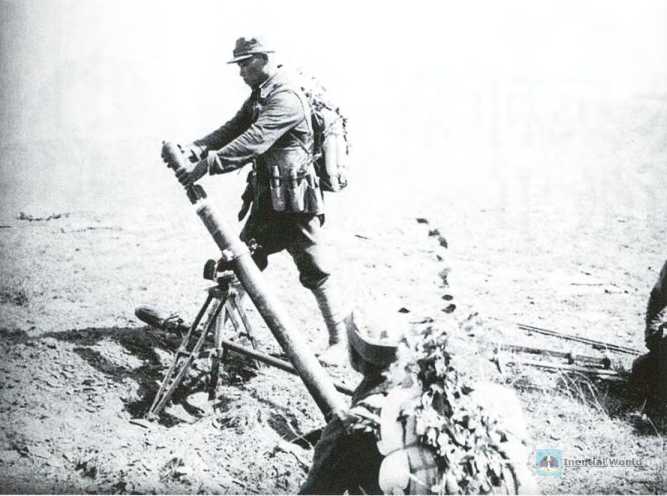

How can the Japanese be driven out of the stronghold? Zhao Zhangcheng racked his brains and finally came up with an amazing plan. A good way to smoke the enemy with pepper powder - using pepper powder as bombs. When the nearby people heard that peppers were needed to fight the enemy, they came to support and contributed all the peppers in their homes. Zhao Zhangcheng and the communicator Ji Wanming poured out part of the explosives in the shells, then filled them with pepper powder, loaded them with explosives, and finally screwed on the fuse. The two prepared a total of 20 "pepper powder shells". In order to improve the shooting effect, Zhao Zhangcheng led the artillery company to advance the firing position to 150 meters away from the enemy, set the scale to 50 degrees, and implement close-range shooting.
Afterwards, Zhao Zhangcheng personally conducted aiming and test firing, and stipulated the firing areas of each gun. After the attack began, all 4 mortars of the company fired at the same time, and the shells exploded around the Japanese bunkers. The overwhelming spicy smell poured into the enemy bunkers, making the Japanese cry and cough. The Japanese thought that the Eighth Route Army had fired poison gas bombs, and they all scrambled to escape. At this time, the attacking force of the 1st Battalion of the 13th Regiment immediately launched a charge and occupied the Japanese stronghold in one fell swoop, and almost all the Japanese troops were annihilated.
The first armored force
As early as the Agrarian Revolutionary War and the Anti-Japanese War, I started to train armored talents, but due to the difficult struggle environment, I have not been able to realize the long-cherished wish of forming an armored force. It was not until early 1949 that the first armored force of our army was established in the Dongling area of Shenyang.
In September 1945, the Yan’an Artillery School, under the instructions of the Central Military Commission, advanced into the Northeast under the leadership of Principal Zhu Rui and Political Commissar Qiu Chuangcheng, and arrived in the Dongling area of Shenyang on November 20 of that year and stationed in Majiawanzi Village. Since the Yan’an Artillery School was "lightly equipped" to advance into the Northeast without a single artillery, the first task of the artillery school after arriving in Shenyang was to search for artillery equipment left by the Japanese army in Shenyang and surrounding areas.
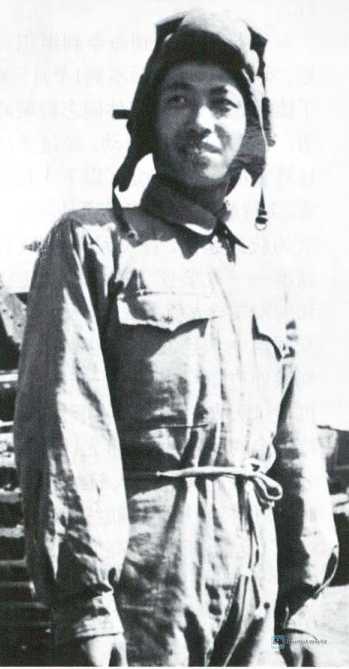
Soon, Li Ziqun of the Mule and Horse Brigade of the Artillery School, who was out looking for artillery, reported to Principal Zhu Rui: "Comrade Gao Ke from Shenyang took two Japanese tanks out of the city and stopped them in Maguanqiao Village. Due to the chaos of war, Gao Ke was very afraid of being hijacked by the enemy bandits, and was very anxious and wanted to find someone to pick him up." It turned out that Gao Ke, who was in charge of security work at the Northeast Democratic Autonomous Army Command in Shenyang in mid-November, accidentally discovered two Japanese tanks while scouting the situation of enemy spies at the Japanese Kwantung Army Tank Repair Factory in Shenyang. After learning that these were two repaired tanks, he reported to Deputy Commander Lu Zhengcao. Lu Zhengcao was very happy to hear that there were tanks, and asked Gao Ke in detail about the status of the tanks. Afterwards, Lu Zhengcao solemnly said to Gao Ke: "I will give this glorious task to you, and you must get the tanks over." Therefore, Gao Ke returned to the Japanese puppet tank repair factory and risked his life to deal with the puppet personnel in the factory. He finally forced several Japanese puppet technicians to drive two tanks to a destroyed factory. Zhu Rui was very happy after listening to Li Ziqun’s report and immediately said: "No matter which unit they are from, as long as they are our own people, we must support them. He immediately assigned Sun San (who had studied tanks at the Moscow Military Technical School), the head of the queue section of the Yan’an Artillery School, and others to lead a platoon to support them. Seeing his comrades, Gao Ke held Sun San’s hand tightly and was speechless for a while. In view of the tense situation, everyone had to take the tank that could be driven to the station of the Yan’an Artillery School first. Majiawanzi Village. When Zhu Rui saw the tank coming, he said happily: "We finally have our own tank!" Then, based on this tank, the first armored unit of our army, the Northeast Tank Battalion, was formed.
After a while, several Japanese and puppet technicians were forced to drive two tanks to a destroyed factory.
After listening to Li Ziqun’s report, Zhu Rui was very happy and immediately said: "No matter which unit they are from, as long as they are our own people, we must support them. He immediately assigned Sun San (who had studied tanks at the Moscow Military Technical School), the head of the queue section of the Yan’an Artillery School, and others to lead a platoon to support them. Seeing his comrades, Gao Ke held Sun San’s hand tightly and was speechless for a while. In view of the tense situation, everyone had to take the tank that could be driven to Majiawanzi Village, the station of the Yan’an Artillery School. When Zhu Rui saw the tank coming over, he said very happily: "We finally have our own tank!" Then, based on this tank, our army formed the first Armored Forces - Northeast Tank Battalion
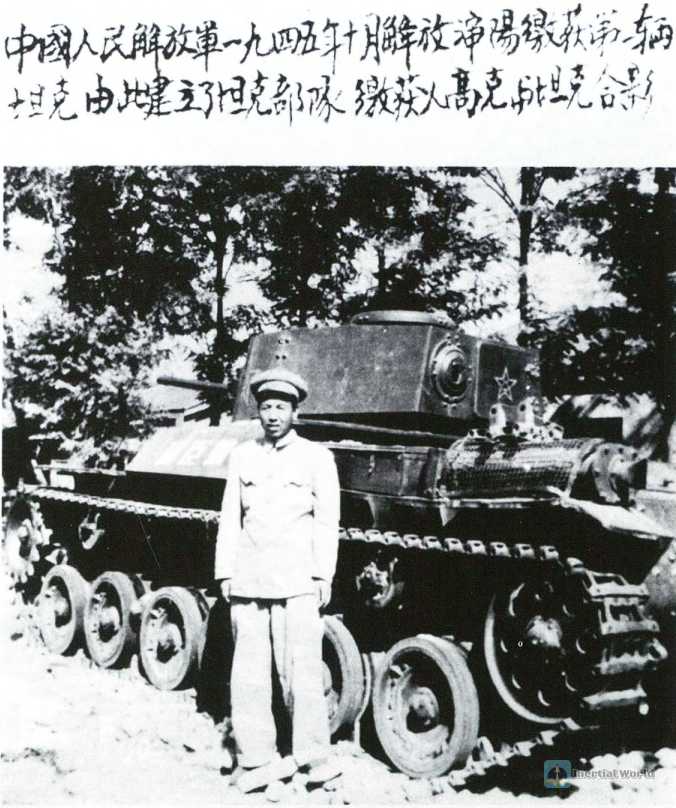
This is the first tank in the history of our army. It is a Type 97 medium tank (97 is the Japanese Emperor’s calendar) manufactured by Mitsubishi Heavy Industries in 1937. It was Japan’s main battle tank during World War II. It weighs 17 tons, has a crew of 4 people, an engine power of 149.2 kilowatts, a maximum speed of 40 kilometers per hour, and is equipped with a 47mm tank gun and a 7.7mm machine gun. Because the tank parts are old , so it was affectionately called "Old Man Tank" by our tankmen
In the 1948 Liaoshen Campaign to attack Jinzhou, the Northeast Tank Battalion participated in this large-scale urban assault for the first time. The "Old Man Tank" and three other tanks covered the infantry to break through the outer fortifications of the old city of the Kuomintang defenders. During the battle, the three tanks were successively damaged and fell into the ditch, unable to fight, and the "Old Man Tank" rushed to the enemy position alone. Due to the fierce enemy artillery fire, the "Old Man Tank" was injured 5 times, but the driver Dong Lai Fu risked his life, climbed out of the tank several times, repaired the tank, and then started to move forward, continued to attack, and eliminated the enemy’s firepower points one by one, clearing many obstacles for the infantry to advance. "Old Man Tank" The "first tank" was repaired and fought at the same time, and rushed to the Kuomintang army’s city defense headquarters, and fired fiercely at the enemy headquarters, forcing the enemy to raise the white flag. After the war, the Fourth Field Army Headquarters and the Political Department named this tank "Gongchen", and all the crew members were awarded the third-class collective merit, and Dong Laifu was awarded a great merit.
After the Liaoshen Campaign ended, the "Gongchen" tank followed the Fourth Field Army southward and participated in the Pingjin Campaign. In the battle to attack Tianjin, the "Gongchen" performed outstandingly and made another military merit. All the crew members of the "Gongchen" tank were awarded the first-class collective merit, and the driver Dong Laifu was awarded a great merit again. Subsequently, the "Gongchen" tank and its tank regiment participated in the Beiping entry ceremony and the Xiyuan Airport parade. At the founding ceremony, the "Gongchen" tank gloriously participated in the parade and was reviewed by Chairman Mao Zedong as the leading tank.
The First Flying Squadron
In May 1949, the People’s Liberation Army had crossed the Yangtze River and was advancing to East China, South China, Northwest China, and Southwest China. However, the Kuomintang Air Force, which was entrenched in Qingdao, Hankou, Zhoushan Islands, etc., still harassed and bombed our newly liberated areas from time to time. On May 4, the enemy took advantage of the fact that our army had not yet established effective air defense and suddenly sent 6 B-24 bombers to harass the Beijing-Tianjin area, which seriously threatened the security of Beijing, which had just been liberated.
At that time, the Party Central Committee was preparing to hold the First National People’s Political Consultative Conference in Beijing and decided to hold the meeting in Beijing in September. In order to ensure the smooth convening of the First Political Consultative Conference and the smooth conduct of the founding ceremony, the Central Committee decided to establish an air defense force to deal with possible attacks by enemy aircraft and ensure the security of the Beijing area. In accordance with the instructions of the Central Committee, the flight team was officially established on August 15, 1949. The combat command and flight training were unified by the Aviation Bureau of the Military Commission, and the Aviation Department of the North China Military Region was in charge. The flight team has 3 flight squadrons and 1 maintenance squadron. In September, several flight groups responsible for special aircraft air transport missions were assigned to the leadership of the flight team and became the 4th squadron. In the early days, the flight team had only more than 30 aircraft of various types, and only 50 to 60 aircraft personnel. Some of the aircraft used were seized from the Kuomintang Air Force and repaired after patchwork, and some were from the uprising. After the establishment of the flight team, after a short period of intensive training, it officially took on the air defense combat mission in the Beijing area on September 5, 1949. From then on, the Chinese people had their own air combat force for the first time.
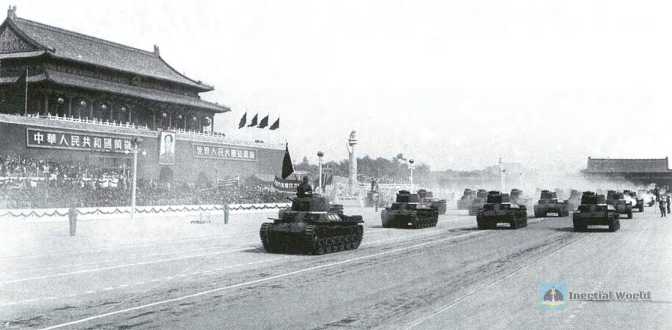
In early September 1949, the flight team received an order to prepare for the air review of the founding ceremony, and all the team members were excited. In order to ensure the review mission of the founding ceremony and strengthen the combat capability of the flight team, two pilots with better skills, Lin Hu and Meng Jin, were selected from the pilots who received P-51 fighter training in the fighter training squadron of the old Northeast Aviation School to participate in the combat duty flight of the Air Force review.
It took less than one month for the flight team to organize the plan and implement the review from the time it received the order. In order to do a good job in this love review, all comrades worked together and worked hard. After many calculations and drills, the following flight plan was determined: flight route-choose the sky above Shuangqiao in Tongxian as the starting point of the route and fly directly to Tiananmen; flight altitude-it is necessary to make it easy for the party and state leaders on the Tiananmen Tower to observe, and to take into account that if an aircraft malfunctions during the review, it can slide to the outside of the city for forced landing; aircraft speed-in order to keep the aircraft in a neat formation when passing through Tiananmen Square and maintain a certain interval time, calculate the time for the aircraft of each squadron to take off and enter the starting point of the route in advance, maintain the specified route speed and altitude, and the altitude difference between each squadron.
In order to meet the above requirements, the flight team has conducted many simulation exercises over the old runway in the east-west direction of Nanyuan Airport, mainly training the lead aircraft of 6 squadrons, and also practiced 17 aircraft passing over Tiananmen Square according to the scheduled route and navigation parameters. Once, when the National Committee of the Chinese People’s Political Consultative Conference was meeting in the Huairen Hall of Zhongnanhai, the delegates heard the whistling sound of the plane and were a little panicked. Vice Chairman Zhou Enlai immediately comforted everyone and said, "This is our plane, which is being trained to prepare for the founding ceremony." When the delegates heard that it was their own plane, they were all excited and applauded warmly.
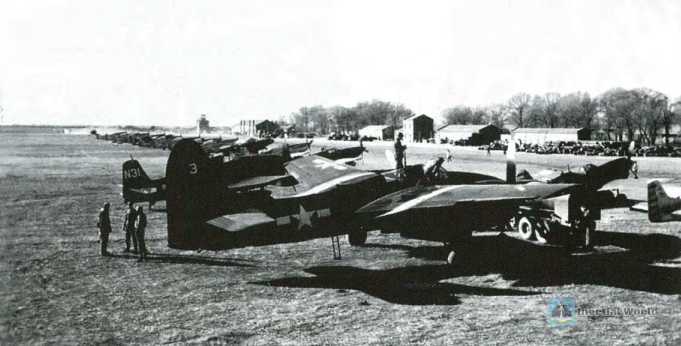
At 3 pm on October 1, 1949, the founding ceremony officially began The military parade began at 4:00. The 17 aircraft at Nanyuan Airport took off one after another according to the scheduled plan, and all circled over Shuangqiao, Tong County, at the prescribed route altitude and speed. At 4:35, the air parade began. Under the unified command of the air team leader, the teams maintained the prescribed altitude difference, speed and time interval, and entered the route from east to west at an altitude of 900 meters, 600 meters and 450 meters respectively. At this moment, the blue sky was described with a small amount of broken clouds, visibility was good, and the ground was clearly visible. The fleet roared through Tiananmen Square and successfully completed the task.
The first airborne troops
In the second half of 1949, the mainland of my country was basically liberated. The Party Central Committee and the Central Military Commission, in accordance with Chairman Mao Zedong’s proposal to strengthen national defense construction and modernize revolutionary armed forces The guiding ideology of the power and the need to liberate Taiwan seriously considered the issue of forming an airborne force.
On August 1, 1949, the Central Committee sent Liu Yalou to Moscow with Wang, Lv Liping and others to discuss with the relevant Soviet parties on helping my country to establish an air force. Liu Yalou followed the instructions of the Central Committee and consulted with the responsible comrades of the Soviet Air Force. In November of the same year, after careful research, the Central Committee, Premier of the State Council and Vice Chairman of the Central Military Commission Zhou Enlai personally drafted a decision for the Central Committee to form an airborne force. On February 15, 1950, 41 consultants were hired from the Soviet government and 300 parachutes were ordered, creating conditions for the formation of an airborne force.
On April 1, 1950, the Central Military Commission officially issued an order to select personnel to form an airborne force. According to the characteristics of the airborne troops fighting independently behind enemy lines, they must be brave, tenacious, and flexible, and it is required to select a group of combat heroes and exemplary squad and platoon cadres from various military regions and field armies to form airborne troops. On July 17 of the same year, the Central Military Commission determined the unit number as the 1st Marine Brigade of the Chinese People’s Liberation Army Air Force.
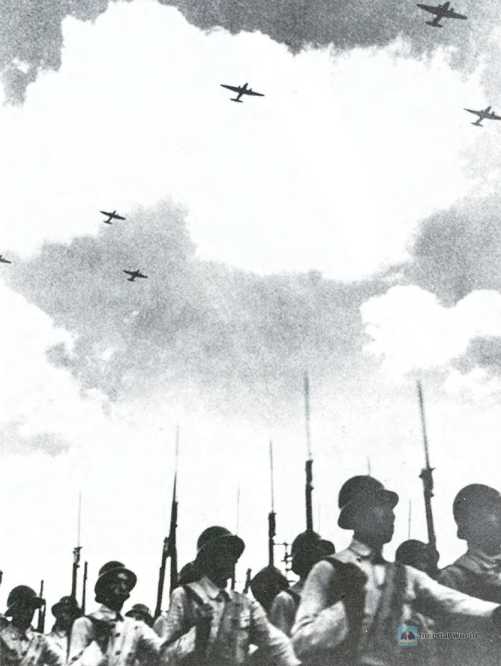

The leadership of the 1st Marine Brigade of the Air Force was established by the Central Military Commission at the request of the 3rd Field Army. The Military Commission issued an order in July 1950, appointing Wang Jianqing, the commander of the 77th Division of the 26th Army of the Army, as the brigade commander, Fang Ming, the chief of staff of the 20th Army of the Army, as the deputy brigade commander, Ding Zhao, the deputy political commissar of the 91st Division of the 31st Army of the Army, as the deputy political commissar, and Lin Zhen, the director of the Political Department of the 63rd Division of the 21st Army of the Army, as the director of the Political Department.
On July 26 of the same year, the leadership of the brigade was established in Shanghai. Most of the cadres were selected from the 9th Corps of the 3rd Field Army. The establishment meeting of the organization was presided over by Wang Jianqing, Fang Ming, and Lin Zhen, who arrived earlier. On August 1, the brigade headquarters moved from Shanghai to Kaifeng and further strengthened the cadres of the headquarters.
A group of 41 Soviet advisors arrived in Kaifeng from Beijing at the end of July, accompanied by the staff of the Air Force leadership, before the arrival of the brigade headquarters. After the brigade headquarters arrived in Kaifeng, it immediately started the work of forming the troops.

On September 17, 1950, the 1st Air Force Marine Brigade held its founding meeting in Kaifeng. Since then, New China has had its first airborne troops and September 17 was designated as the anniversary of the birth of airborne troops. At that time, the urgent task facing the brigade was to enable officers and soldiers to quickly master parachuting skills and tactics and techniques of airborne operations behind enemy lines so that they could take on the mission of liberating Taiwan. On September 29, the troops organized the first parachuting day for the new Chinese soldiers in the southern suburbs of Kaifeng. The first person to jump out of the first plane was the combat hero, the commander of the 1st Battalion, Cui Hanqing. Other cadres and soldiers followed closely and bravely jumped out, and all landed safely. The officers and soldiers of the whole brigade who visited the scene were extremely excited to see this scene; the comrades who jumped down reported to the brigade leaders with the excitement of victory: "The first parachute jump was successful!"
In the first half of 1951, the troops were invited to participate in the military parade of the second anniversary of the National Day in the capital. On the morning of October 1, this new People’s Airborne Corps passed Tiananmen Square with strict military appearance, neat formation and vigorous steps, and gloriously accepted the review of the leaders of the Party and the country, and announced to the people of the whole country and the world that the Chinese People’s Liberation Army has a new branch of airborne troops in the modernization construction.
The first radar unit
On May 27, 1949, Shanghai, the earliest large city in China, was liberated. The Kuomintang, which had fled to Taiwan, threatened to send air force planes to bomb Shanghai and asked the Communist Party to take over a dark Shanghai without electricity and water. Sure enough, not long after, the Kuomintang Air Force planes continued to bomb and harass the Wusongkou in the urban area and the coastal and riverside areas, causing panic among the people.

In order to strengthen Shanghai’s air defense, in July, the 9th Corps Command of the East China Field Army and the Songhu Garrison Command established an air defense department responsible for planning the construction of urban air defense in Shanghai, and jointly established the Shanghai Air Defense Security Committee with the Shanghai Public Security Bureau and other departments to jointly organize and command Shanghai’s air defense operations and civil air defense. In order to obtain air raid intelligence in a timely manner, two better radars were selected from the more than 10 dilapidated radars left by the Kuomintang. After a little renovation, our army established the first radar team, which was specifically responsible for air defense.
On February 6, 1950, the Kuomintang Air Force dispatched 17 aircraft of various types to the city and carried out crazy bombing on the Shanghai Electric Power Company, Zhabei and Hunan Power Plant Waterworks, dropping more than 60 bombs, killing and injuring more than 1,400 people, and destroying more than 2,000 houses. This was the "February 6" bombing that shocked China and the world. In this case, in order to strengthen the intelligence support for Shanghai’s air defense, Commander Chen Yi of the East China Military Region instructed: immediately select some fourth-year students from the Department of Electrical Engineering of Jiaotong University to go to the Anguo Road Radar Team of the Air Defense Department of the Songhu Garrison Command of the East China Military Region for intensive learning and master radar operation technology as soon as possible.
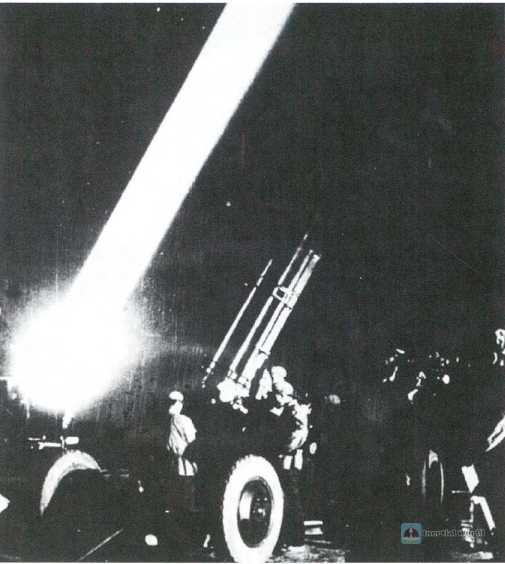
Around 3 pm on February 16, 21 students packed up and took a car to report to the Air Defense Department. After dinner, Feng Genyi, the intelligence chief of the Air Defense Department, introduced the situation of the radar team. Only then did everyone know that this radar team was formed in September 1949. The radar was mounted on the roof of a 6-story building at No. 76 Anguo Road, Shanghai. There were two relatively complete Japanese-made "Type 4" radars, as well as some incomplete Type 313 and Type 6 radar components, all of which were left to the Kuomintang by the Japanese army when Japan surrendered.
That night, the captain led them to the radar studio and introduced the composition, performance and operation methods of the radar. Then let everyone familiarize themselves with the machine and practice basic operations such as turning it on and off and determining target coordinates. At the same time, the instructor and three members of the Youth League branch studied and determined to organize 21 comrades into 7 combat duty groups, and began to take turns on day and night duty the next morning. In this way, this group of university graduates, from receiving the task to participating in combat duty, became the first generation of radar operators with university degrees in the history of our army in less than 24 hours.
At 9:00 a.m. on March 20, 1950, the operators on duty, Shi Songnian and Ji Yanhua, found that a weak peak suddenly appeared at 250 kilometers (southeast) on the display screen, and it was moving slowly and the amplitude was gradually increasing. Although they had never seen what the echo of an aircraft looked like, they judged by intuition that it was an incoming enemy aircraft. They immediately reported to the command room: "Enemy aircraft!" and then reported the distance and direction of the enemy aircraft. The comrades in the command room were skeptical at first. Director Liu Guangyuan immediately came to the display studio. When he saw the echo getting closer and closer, he decisively issued a battle preparation order to the anti-aircraft artillery unit.
According to visual observation, the enemy aircraft’s bombing target was indeed the Zhabei Power Plant. Although no enemy aircraft was shot down that day, the radar team provided distant intelligence, the anti-aircraft artillery unit was prepared, the shooting was timely, and the firepower was fierce. The enemy aircraft did not dare to fly low, and it dropped its bombs and fled in panic before approaching the target. The Zhabei Power Plant was safe and sound.
On the night of May 11, 1950, the enemy plane took advantage of the darkness to attack Shanghai. When the plane was more than 200 kilometers above Shanghai, it was discovered by our radar on Anguo Road. Due to the timely support of long-range intelligence, the air defense combat force won enough time to prepare for the battle. In addition, the radar station provided continuous medium and short-range intelligence and accurate guidance. Therefore, as soon as the enemy plane entered the Shanghai airspace, it was illuminated by the searchlight troops who were ready for battle. The anti-aircraft artillery troops seized the opportunity to shoot fiercely and shot down a B-24 bomber that was coming, which crashed in Tangqiao Town, Pudong.
The first submarine force
In 1950, only one year after the establishment of the People’s Republic of China, the Party Central Committee was ready to establish a submarine force.
In August 1950, the Navy Conference proposed to first train submarine cadres and include the purchase of submarines in the three-year plan for naval construction. On December 18, the Chinese government formally proposed to the Soviet government that my country would be provided with submarines in 1951 and that the Soviet side would train personnel for four submarines for my country. In February 1951, Fu Jize, then leader of the 6th Fleet of the East China Military Region Navy, was ordered by the Navy to come to the Beijing Navy leadership to accept the task.
At this time, the Soviet side had agreed to train four submarine crews and necessary command personnel and base personnel for my country, and provide two submarines as training boats. The training location was changed to the Lushun Naval Base of the Soviet Pacific Fleet (at that time, Lushun was jointly managed by China and the Soviet Union). In mid-April, the submarine training team was mobilized and formed. In early May, the submarine training team arrived at the submarine detachment of the Lushun Base of the Soviet Navy Pacific Fleet. The Soviet submarine detachment prepared barracks for the learning team to live and study at Laohuwei in Lushun, and provided two "Shook" type submarines for internship use.
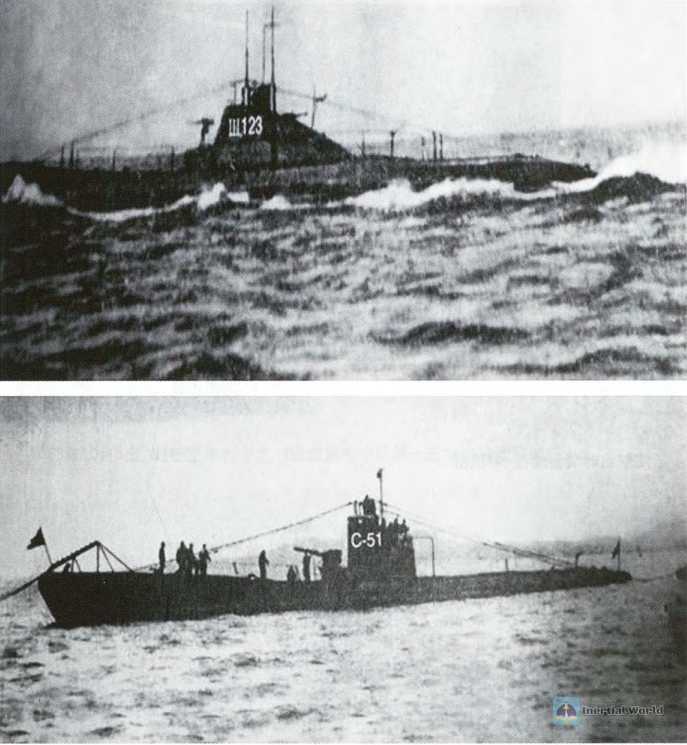
The submarine learning team is a formation brigade composed of crew members of four submarines. In order to facilitate learning, all personnel were divided into 13 professional learning classes according to their majors during the theoretical learning stage. In terms of teaching methods, the Soviet officers first provided the textbooks of each course, translated them into Chinese, and explained them in essence, and then our personnel gave lectures in the classroom. After three years of rigorous training and learning, the average score of the trainees was above 4.7, and no one or any professional exam failed.
In 1952, in order to solve the problems of submarine berthing, technical equipment, and logistics support after the completion of the submarine learning team, the Navy began to prepare for the construction of a submarine base with the approval of Premier Zhou Enlai. In order to train professional and technical backbones for the submarine base, the Navy successively selected more than 70 officers and soldiers as branches of the submarine learning team to study in various relevant factories in Dalian and train technical backbones for the submarine base.
On February 14, 1953, Premier Zhou visited the study team for the second time and left a valuable inscription on the "C-51" boat duty log: "Follow Chairman Mao’s instructions and learn submarine warfare." The submarine study team followed this instruction and completed the task of learning submarine professional technology with excellent results.
On June 24, 1954, at Laohuwei, Lushun, the Chinese Navy Chief of Staff Zhou Xihan and the Soviet Kwantung Army’s Supreme Commander Lieutenant General Shvetsov attended the handover and flag-raising ceremony of the Soviet Union handing over two "Stalin" submarines to us. The two submarines were named "New China 11" and "New China 12" respectively. The "August 1" military flag was raised on the submarine mast for the first time. From June 28 to 29, New China’s own submarine drew the first track on the sea, sailed from Lushun to Qingdao, and officially began combat readiness duty.
The first naval aviation division
The naval aviation is one of the main arms of the navy and an important part of the navy’s combat effectiveness. Therefore, during the founding period of the People’s Navy, the naval aviation was established. In April 1952, the 1st Naval Aviation Division was established in Shanghai according to the telegram of the General Staff. On June 27, the first combat unit of the naval aviation, the 1st Naval Aviation Division of the Chinese People’s Liberation Army, held its founding meeting at Shanghai Hongqiao Airport.
In order to enable the newly formed 1st Naval Aviation Division to start training as soon as possible and take on combat tasks as soon as possible, in July 1952, the Naval Aviation issued the "Combat Training Instructions for the Naval Aviation Division in the Second Half of 1952". Different training contents and requirements were proposed for the two regiments of the 1st Division. It was also required that the squadron-level cadres of the two regiments and the night flight brigade of the 4th regiment increase night flight training, the 1st regiment trains a reconnaissance squadron, and the 4th regiment trains two reconnaissance squadrons to perform maritime air reconnaissance tasks.
The troops had just been formed, and the principle of combining combat training with actual combat training was implemented. Whatever was needed in the battle, the training of subjects would be given priority. By the end of 1953, the 1st Naval Aviation Division had successfully completed its formation, and the aircrew had basically completed the sea flight training mission. The young 1st Naval Aviation Division has become an important combat force of the Navy, shouldering the great struggle tasks of eliminating the remaining enemies, consolidating national defense, and defending the motherland’s sea and air.
From 1950 to 1954, with the support of the US military, the Kuomintang army used Dachen Island as a base, strengthened its garrison forces on Baoshan Islands, Dongfan Islands, Yijiangshan, Pishan, Nanmoshan and other islands, and established a flight control center on Dachen Island, which is only 30 kilometers away from the mainland, to guide fighter-bombers taking off from Taiwan Air Force Base to frequently harass our coastal areas in eastern Zhejiang, sometimes up to dozens of sorties a day, and the activities were very rampant. They scouted our ground and sea targets, bombed and strafed our ships and transport and fishing boats, covered enemy ships to attack us, destroyed our fishery production and sea transportation, and seriously threatened the economic construction and the safety of people’s lives and property in the early days of the founding of the People’s Republic of China.

In April 1954, according to the order of the General Staff, the 1st Battalion of the 4th Regiment of the 1st Division of the Navy entered the Ningbo Airport to cooperate with the brother divisions in air combat and cover our ships at sea. On the morning of June 3, our radar found that there were two F-47 fighter-bombers of the Kuomintang Air Force 88 kilometers south of Pishan, which continued to flee northward through Dachen Island, attempting to scout and bomb our Dongfan Islands and nearby ships. The command post ordered Zhou Kelin to lead the No. 2 aircraft Du Jiuan, the No. 3 aircraft Liu Liangyang, and the No. 4 aircraft Ren Xuli to attack.
Zhou Kelin’s squadron flew over the war zone in accordance with the order of the command post. Zhou Kelin first discovered that there were two enemy planes 5 kilometers north of Xiaoeguan, and immediately reported to the command post. The command post reported: "185 is covering you above, stay calm and hit hard!" Zhou Kelin immediately led the team to climb higher, using the height advantage to turn left and go around the tail of the enemy plane. The enemy discovered our propeller plane and turned the nose to rush towards Zhou Kelin’s squadron. Our No. 1, 2, and 3 planes immediately opened fire, forcing the enemy plane to turn right and rear, and Zhou Kelin’s squadron followed closely. When Zhou Kelin bit the enemy’s lead plane and prepared to attack, he suddenly saw that No. 4 plane Ren Xuli was attacked by the enemy’s wingman. Zhou Kelin hurriedly gave up the favorable attack opportunity, turned the nose, turned to the enemy wingman and fired, hitting the enemy wingman and making it smoke and flee, saving Ren Xuli from danger. When Du Jiuan, the No. 2 aircraft, was covering Zhou Kelin’s attack, his descent speed was too high and he rushed in front of Zhou Kelin. When he turned, he found the enemy leader and shot from the right side of the enemy plane, hitting the right wing of the enemy leader. Liu Liangyang, the No. 3 aircraft, continued to chase the injured enemy leader. Seeing that he was being chased by our aircraft, the enemy plane circled at a large slope, tried to get rid of our attack, and circled behind our aircraft to wait for an opportunity to counterattack. Liu Liangyang was flexible and took advantage of the small turning radius of the La-11 aircraft. He kept pressing and circled several times, chasing from an altitude of 1,000 meters to 200 meters, and finally got the opportunity to attack. He pressed the gun button and hit the enemy plane.
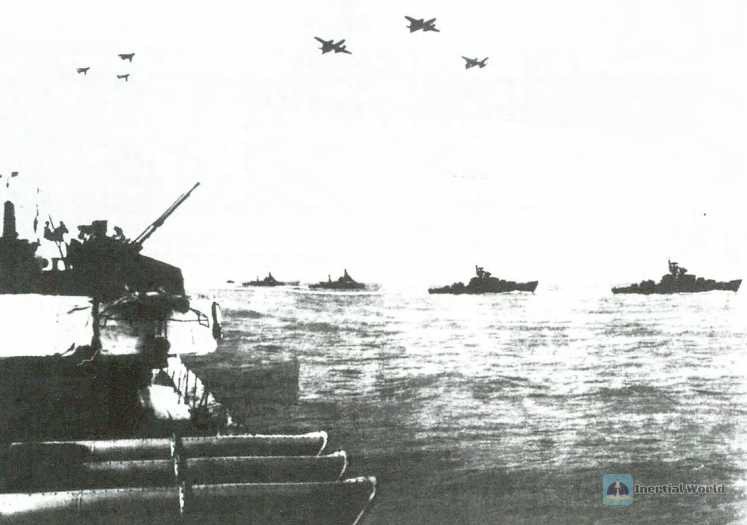
Just as Zhou Kelin climbed high to chase the enemy wingman, he found the enemy leader in front of him and immediately aimed. He and Liu Liangyang fired at the same time, hitting the enemy plane and the enemy plane caught fire. Ren Xuli, the pilot of the No. 4 aircraft, was slightly injured in the tail wing of the aircraft, but he always covered the leader Liu Liangyang. After Liu Liangyang and Zhou Kelin withdrew from the attack, he continued to fire at the enemy leader, but missed. The enemy leader was first injured by Cun Jiuan, and then hit by Liu Liangyang and Zhou Kelin at the same time, and finally plunged into the rough sea with a big fire.
This was the first air battle between the 1st Division of the Naval Aviation and the enemy. After 5 minutes of fighting, one enemy aircraft was shot down and one was damaged. In the history of the I Division of the Naval Aviation, a chapter of victory was written.

The first missile unit
After the founding of New China, the Taiwan Kuomintang Air Force never stopped its reconnaissance of the mainland coast and even in depth. In particular, high-altitude reconnaissance aircraft were frequently dispatched and conducted countless reconnaissance missions. They came and went as they pleased, and we could do nothing about it.
In order to change this passive situation and strike the enemy’s air superiority, in March 1956, the Party Central Committee made the decision to "develop the missile and rocket industry" and decided to introduce missile technology from the Soviet Union. Li Fuchun was sent to Moscow to ask the Soviet government for technical assistance in missiles. After negotiations, the Soviet government agreed to assist my country with the "Sam-2" surface-to-air missile, and would send a group of experts to help form a surface-to-air missile force and send officers and soldiers from a missile battalion to teach.
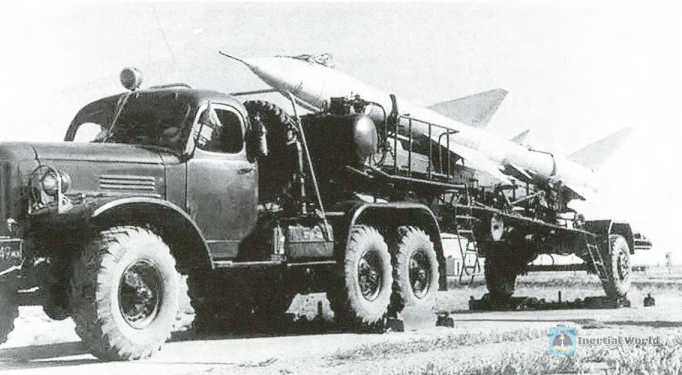
In October 1958, in accordance with the instructions of the Party Central Committee and the Central Military Commission, my country’s first surface-to-air missile force began to be formed. The first batch formed three battalions. While the troops were being prepared, the "Sam-2" surface-to-air missiles introduced from the Soviet Union and the Soviet missile battalion that came to teach, led by Battalion Commander Slyosky, also arrived in Beijing on November 29, 1958. After the formation of the missile battalions, they gathered in succession at the former Oriental Marxist-Leninist College in Changxindian, Beijing, and were taught by Soviet instructors to conduct surprise training for the troops.
After four months of surprise training, the troops’ basic theory and practical operation assessments achieved excellent results. The last project of the surprise training was live-fire shooting. In April and August 1959, two batches of live-fire shooting and target shooting assessments were conducted on a wasteland in the northeast of Zhongwei County, Ningxia, and at the Dingxin Gobi Desert Shooting Range in Gansu. All three battalions hit the target accurately and the live-fire shooting was successful. After the shooting, the troops returned to Beijing and began combat readiness duty on September 15, 1959.
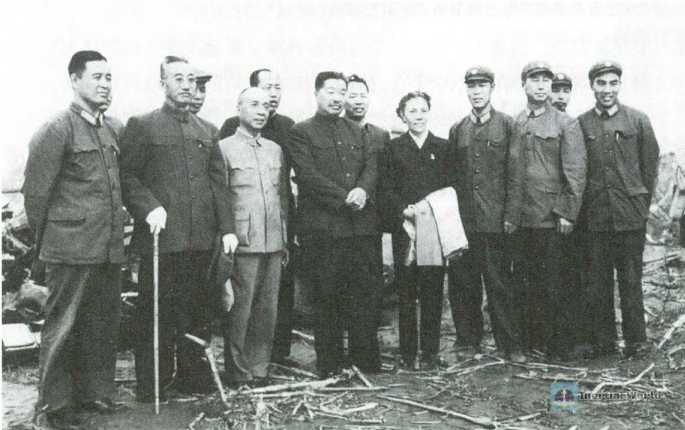
The ground-to-air missile troops were put into combat readiness, which added new combat effectiveness to our national air defense operations and changed the situation where the enemy was superior and we were inferior. At 12:00 am on October 7, 1959, a RB-57D high-altitude reconnaissance aircraft of the Kuomintang Air Force invaded the airspace above the Second Battalion position deployed in Zhangjiawan, Tong County, and was shot down by the Second Battalion in one fell swoop. The pilot Wang Yingyin was killed. This was the first time in my country and the world that a missile was used to shoot down an aircraft at an altitude of 20,000 meters. After that, our ground-to-air missile troops repeatedly shot down U-2 high-altitude reconnaissance aircraft and high-altitude unmanned reconnaissance aircraft, severely hitting the arrogance of the United States and Chiang Kai-shek, inspiring the Chinese people and attracting the attention of the world.
The leaders of the Central Military Commission, Zhu De, Lin Biao, He Long, Xu Xiangqian, Marshal Nie Rongzhen, Li Fuchun, Yang Shangkun, Cai Chang, Tan Zheng, Yang Chengwu, Liu Yalou and others came to the second battalion position and the site of the enemy plane crash, to comfort the troops and visit the wreckage of the plane. When the battalion commander Yue Zhenhua reported the battle, they said repeatedly: "Fight well! Fight well!"
The first air force tanker unit
In the late 1980s, my country began to develop aerial refueling technology. Under the conditions of no technical data, no original aircraft, and no foreign technical support, based on the principle of "economic, reliable, and practical", relying on its own strength, after countless research and experiments, the aerial refueling aircraft was successfully developed. At the 50th anniversary of the National Day in 1999, the aerial refueling aircraft echelon developed by my country passed over Tiananmen Square accurately. This marks that the People’s Air Force has taken the first strategic step towards the national air defense of "both offense and defense".
Internationally, there are four recognized problems in aerial refueling technology: First, the refueling pod problem, which is the core problem of aerial refueling technology. Second, the aerial rendezvous technology, that is, the accurate, timely and safe rendezvous of the refueling and receiving aircraft in the designated airspace. The key to this technology is to establish effective communication between the two sides so as to guide each other until the rendezvous is successful. Third, the aerial docking technology. After the receiving aircraft and the refueling aircraft rendezvous in the designated airspace, the top priority is to form a dense formation. Because the refueling aircraft is large in size, it is easy to cause turbulence in the airflow behind it. The receiving aircraft is easily disturbed when it is close, and it is difficult for the pilot to control the aircraft. Fourth, the technical problem of refueling combat aircraft.
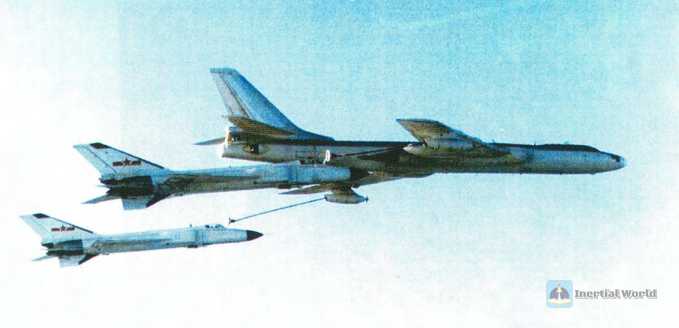
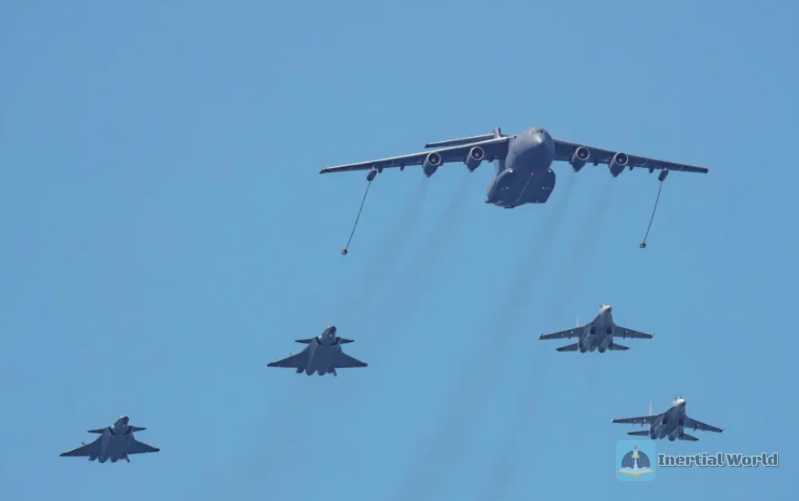
The aerial refueling unit stationed in a certain place in South China is the only tanker unit of our Air Force. Its predecessor was the earliest bomber aviation unit established by the Air Force. The unit has undertaken tasks such as resisting the US and aiding Korea, national air defense, joint exercises of the three services of the army, navy and air force, and supporting local economic construction. It is a brave and combative fist unit of our army. Therefore, in 1996, domestic aerial refueling aircraft were officially equipped with the unit.
Although the aerial refueling technology started late in my country, after several years of practice and exploration, it has the characteristics of "high starting point, rapid development, and rapid equipment". All this is inseparable from the flying efforts of the majority of pilots in this unit. It is particularly worth mentioning here that Zhu Aisheng, a special pilot who is called "Zhu Dianzi" by the commanders and fighters of the unit, is responsible for the top flight experiments of the tanker, constantly summarizing the flight parameters and flight basis, and became the first person in my country to compile the tanker flight training outline textbook.
At the military parade ceremony for the 50th anniversary of the founding of the People’s Republic of China, when the tanker unit received the military parade order, the captain Yin Peiqiang began to carefully calculate, repeatedly study, and constantly practice with the echelon to be reviewed. Yin Peiqiang is an indispensable figure in the development of the aerial tanker unit. He has "four firsts": the first to complete the modification of the new tanker and the ground analogy training; the first batch of tanker take-off flights; the first pilot and commander to conduct night flight training; the first captain of the aerial tanker unit. Finally, the "air refueling and receiving echelon" led by Yin Peiqiang passed over Tiananmen Square on time with zero distance error, zero heading error and zero time error, creating a breakthrough of "three zeros" in the history of the Chinese Air Force’s military parade. The aerial refueling aircraft also became the highlight of the 50th anniversary National Day military parade. The world’s military and public opinion were in an uproar, reporting that our army had added another "air force". Today, the unit has been equipped with a more advanced large-scale Yunyou-20 refueling aircraft, which will contribute new strength to the improvement of the combat effectiveness of the Chinese Air Force.




